Rosmarinus officinalis
Family Lumiaceae.
Botanical characteristics. A low, evergreen shrub with a height of 60-120 cm.
Stem is woody, branched, with tetrahedral straight branches. Leaves opposite, sessile, linear, leathery, entire, with bent edges downwards, dark green on top, below - whitish from thick fringes.
Flowers are bisexual, irregular, collected in inflorescences 5 to 10 in groinlike inflorescences. Blooms in March - May. The fruit consists of four single-seeded nuts.
Spread. The plant comes from the Mediterranean. Rosemary is cultivated in Russia and Crimea as an essential oil or ornamental plant.
Used parts of the plant. For medicinal purposes, the leaves of rosemary are used, cut immediately before the flowering of the plant. The plant is recognized as an official medicine in many countries of Europe.
Chemical composition. Rosemary leaves contain up to 2.5% of essential oil, 0.5% of alkaloids, bitterness, tannins (5 to 8%), flavones, beta-sitosterols, amirin, betulin, choline, resinous substances, wax, nicotinamide, organic acids Nicotinic, ursolic, coffee, rosemary, glycolic) and mineral substances (up to 10%).
Application in medicine. The plant stimulates immunity reactions. Preparations of rosemary medicinal remove the spasms of the smooth muscles of the digestive tract, biliary tract, urinary tract and peripheral blood vessels, enhance the bile excretory function of the liver, activate the production of gastric juice, show a tonic effect, which is especially noticeable in patients after surgical interventions or severe illnesses. Preparations of rosemary medicinal are used in the general decline of forces, after stress, with mental and physical overwork, disorders of menopause.
The positive effect of rosemary preparations is observed with insomnia , hysteria , neurasthenia , epilepsy , migraine , dizziness, vegetative dystonia, hypertension , impotence , flatulence , asthma, chronic bronchitis , influenza .
Infusion of leaves of rosemary is used for rinses with inflammation of the oral mucosa, and compresses are applied to purulent wounds, boils.
Contraindications. Overdose of rosemary preparations for oral administration leads to poisoning, kidney irritation, pulmonary edema.
Preparation
- Infusion of leaves of rosemary officinalis on wine: 40 g of raw material is poured into 1 liter of white wine, insist 2 days. Take 1 tbsp. L. Before eating with a weakened vision. The course of treatment is up to 3 weeks. After a break of 10 days, the course is repeated.
- Infusion of leaves of rosemary officinalis: 1 tbsp. L. Raw pour 2 cups of boiling water, insist 2 hours, filter. Take half a cup 3 times a day before meals. Course of treatment up to 3 weeks according to indications.

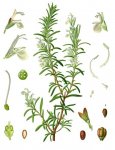
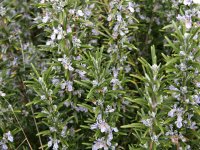
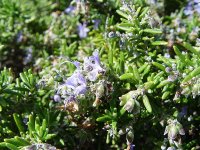
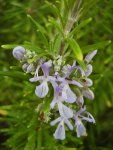
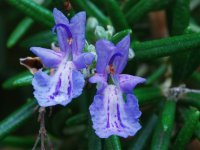

Comments
Commenting on, remember that the content and tone of your message can hurt the feelings of real people, show respect and tolerance to your interlocutors even if you do not share their opinion, your behavior in the conditions of freedom of expression and anonymity provided by the Internet, changes Not only virtual, but also the real world. All comments are hidden from the index, spam is controlled.